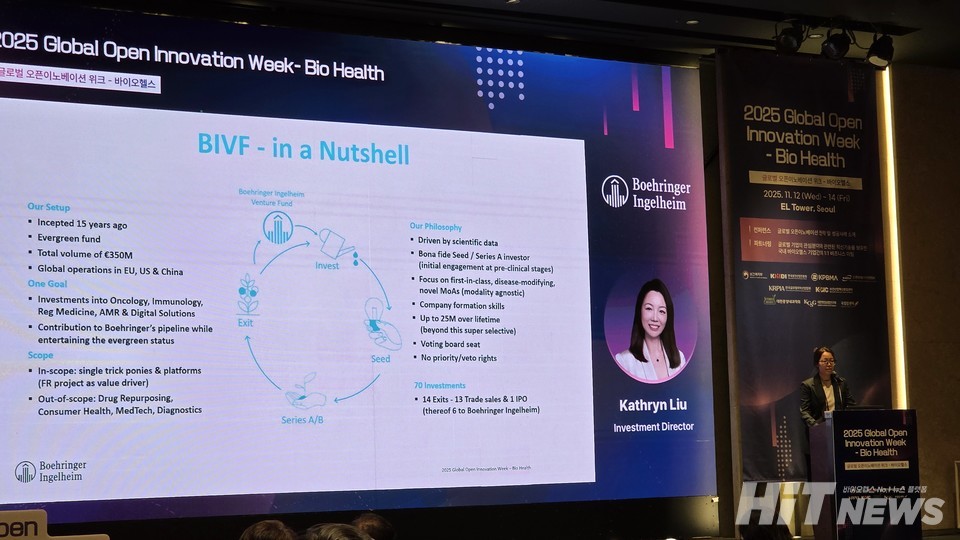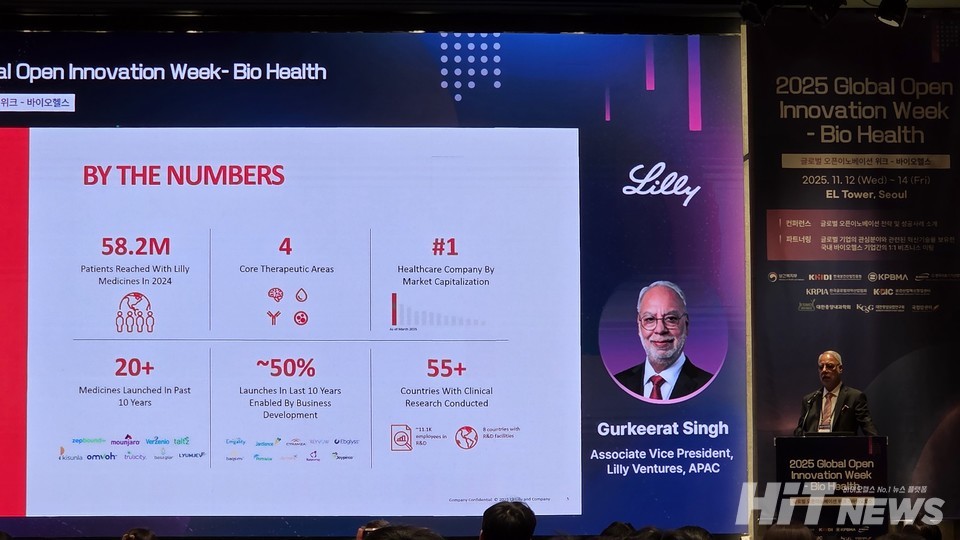Boehringer, Lilly, and Novo Nordisk unveil next-generation partnership models at Biohealth Global Open Innovation Week

Global pharmaceutical companies are redefining their open innovation strategies. Beyond simply acquiring technologies or investing in equity, many now view Korean biotechs as long-term partners for shared growth. Following the success of Yuhan Corporation and Johnson & Johnson’s Lazertinib (Leclaza) collaboration, global players are seeking the “next Leclaza.”
At the 2025 Biohealth Global Open Innovation Week, held on November 12 at the EL Tower in Seoul, Boehringer Ingelheim, Eli Lilly, and Novo Nordisk presented their latest partnership frameworks. Each introduced collaboration models that extend beyond financial investment, offering practical pathways for Korean biotechs to integrate into global drug development pipelines.
Boehringer Ingelheim Prioritizing Independent, First-in-Class Innovation
Boehringer Ingelheim delivered a clear message to Korean biotechs: “Science is power.”
Boehringer Ingelheim emphasized a science-first approach through its Boehringer Ingelheim Venture Fund (BIVF). The fund’s mission is to integrate innovative biotech pipelines into Boehringer’s global R&D network, strengthening the company’s research capabilities.
BIVF focuses on early-stage investments in oncology, immunology, and autoimmune diseases, targeting companies that demonstrate scientific originality—either through first-in-class targets, first-in-class modalities, or novel molecular mechanisms. Approaches like drug repurposing or those based on established mechanisms are intentionally excluded.

Kathryn Liu, Investment Director at BIVF, noted, “The most attractive aspect of BIVF is its guarantee of exit autonomy.”
While the fund invests up to $25 million per company, it maintains light governance—requesting only one board seat and refraining from imposing acquisition rights or priority options. “This flexibility enables biotech companies to leverage BIVF’s capital and mentorship while retaining the freedom to pursue an IPO or strategic sale on their own terms,” she added.
Eli Lilly’s “Catalyze 360”: A Complete Global Development Platform
Eli Lilly introduced Catalyze 360, an all-in-one partnership platform that integrates funding, infrastructure, and R&D expertise. Over half of Lilly’s new products have originated through open innovation, and Catalyze 360 consolidates that success into a structured global program built on three pillars:
· Lilly Ventures — has invested over $2 billion in the past five years, providing direct equity investments for financial stability.
· Lilly Gateway Labs — operates incubators in San Francisco and Shanghai, offering shared lab infrastructure and collaboration with Lilly researchers.
· Explore R&D — supports end-to-end development from discovery through IND filing, helping resource-limited companies accelerate progress and reduce costs.

Gurkeerat Singh, Vice President of Lilly Ventures, said, “Lilly recognizes the inherent risks of biotech. Our goal is to create an environment where innovation can thrive—turning science into reality through transparency and global expertise.” He added that Korean biotech companies can utilize the platform to build “truly global development pathways.”
Novo Nordisk: Focused Expansion in Diabetes, Obesity, and Rare Diseases
Novo Nordisk, which supplies over half of the world’s insulin and treats more than 40 million patients, emphasized that partnerships are at the heart of its corporate DNA, according to Jenny Yang, Head of External Innovation.
Over the past six years, Novo’s global business development team has completed more than 150 transactions, with over 110 ongoing collaborations—more than half advancing into pipeline development. The organization operates from five major hubs—Copenhagen, Boston, China, and San Diego—leveraging diverse scientific expertise.
Yang noted that Novo’s open innovation is anchored in focus. “Our priority remains diabetes, obesity, and related complications, but we are expanding into rare blood and endocrine disorders, backed by five decades of hemophilia experience.”
She added, “While our foundation is in proteins and biologics, we are also open to small molecules, nucleic acid therapies, and gene therapies as we diversify our modalities.”

